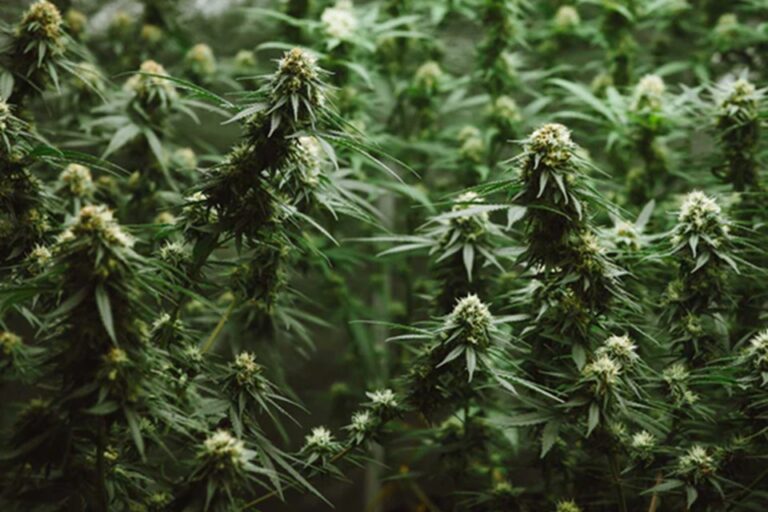Key Takeaways:
- Cannabis has been utilized for over 12,000 years, serving purposes from medicinal remedies to industrial applications. Its influence is seen in the earliest agricultural advances and in modern innovations alike.
- Various cultures have integrated cannabis into their religious and social practices, reflecting its profound cultural significance as more than just a plant but also a symbolic element in traditions and rituals.
- Modern perceptions of cannabis are deeply influenced by its historical uses and the evolving legal landscape, showing that the relationship between people and cannabis has always been dynamic and complex.
Explore the intriguing world of cannabis by uncovering its rich historical and cultural significance in civilizations throughout time. Whether you’re a long-time enthusiast or simply curious about the plant’s journey from ancient civilizations to the modern era, a comprehensive cannabis facts guide is an excellent reference for further surprising insights about cannabis’ multifaceted role in human society. The legacy of cannabis spans centuries and continents, influencing everything from art to industry, and even legal and scientific landscapes today. From ancient rituals to modern medicine and industrial evolution, cannabis has played an influential role across eras and cultures. This article dives deep into those legacies, revealing unique facts and thought-provoking stories from cannabis history. As you adapt your perspective, you’ll come to appreciate how this single plant has had far-reaching effects that extend well beyond recreational use, touching many aspects of human development and collective memory.
Ancient Origins Of Cannabis
Cannabis is one of humanity’s oldest cultivated plants, with archaeological traces pointing to its domestication over 12,000 years ago. Early farming communities in ancient China and Central Asia were among the first to unlock the plant’s remarkable versatility. Hemp—a non-psychoactive variety of cannabis—became fundamental for the survival and progress of these societies. Not only did people use the durable hemp fiber from cannabis stalks to weave some of the world’s earliest ropes and textiles, but they also developed techniques for spinning and dyeing these fibers, setting the stage for the textile industries that followed. By 10,000 BCE, the use of hemp fiber to make nets, fishing lines, and even the earliest shoes demonstrated how crucial the plant was for everyday life. The seeds of cannabis, prized for their high protein and essential fatty acid content, provided significant nutritional support for populations in increasingly agricultural societies. The role of cannabis in early trade networks should not be underestimated, as hemp products were often traded along ancient routes, helping to spread cannabis’s influence throughout Asia, the Middle East, and eventually Europe.
Cannabis In Religious Practices
Spiritual traditions across the globe have recognized and revered cannabis for its psychoactive and mystical properties. In Hinduism, for instance, the plant is seen as sacred to the god Shiva, often consumed in the form of “bhang”—a beverage mix of cannabis, milk, and spices—during vibrant festivals like Holi and Maha Shivaratri. This act is symbolic, invoking divine protection and blessings, as countless worshippers participate in age-old rituals that include singing, dancing, and the sharing of cannabis-infused treats. Meanwhile, ancient Daoist priests in China burned cannabis in incense burners during ceremonies, believing it could drive away evil spirits and connect them more deeply with the spiritual world. The practice of using cannabis for altered states of consciousness was not isolated to Asia; in ancient Scythian culture, for example, shamans are thought to have inhaled cannabis smoke as part of their burial rites. In more recent times, Rastafarians, a modern religious movement originating in Jamaica, have embraced cannabis as a key spiritual sacrament. Their ceremonies involve the ritualistic smoking of cannabis, which they believe helps facilitate meditation, unity, and a deep connection to the divine, highlighting the plant’s continued spiritual relevance.
Cannabis In Early Medicine
The medicinal uses of cannabis are documented throughout the annals of history, testifying to its global importance in healing practices. The Ebers Papyrus, an ancient Egyptian medical text from around 1550 BCE, mentions cannabis as a remedy for pain and inflammation, revealing an early understanding of its therapeutic properties. Ancient Chinese healers, guided by works like the Shennong Ben Cao Jing, included cannabis as an essential ingredient in herbal concoctions for treating rheumatic pain, malaria, and various digestive disorders. Greek and Roman doctors, such as Galen and Dioscorides, also observed cannabis’s effect on ailments ranging from headaches to earaches, and even noted its use as an antiseptic for wounds. Islamic physicians during the Middle Ages further developed cannabis-based medicines, extending their knowledge through extensive translations and commentaries that spread to Europe and North Africa. These ancient medical accounts not only illustrate the persistent search for effective remedies but also explain the long-standing interest in cannabis as a center of pharmacological study, which would later inform developments in both Eastern and Western medicine.
Cannabis In Industrial Use
Long before recreational use gained social prominence, cannabis was at the heart of major industrial advancements throughout human history. The incredible durability of hemp, the strong fiber derived from the cannabis plant, revolutionized industries like shipbuilding, where ropes, sails, and nets made from hemp drastically improved the efficiency and safety of long-distance sea voyages. Ancient civilizations, such as the Chinese and Egyptians, were pioneers in using hemp for both everyday and specialized products, including paper and clothing. Some of the first known papers in ancient China were made from hemp pulp in the 2nd century BCE, and this innovation helped revolutionize education, record-keeping, and governance for countless societies. As hemp cultivation spread westward, its importance remained undiminished, so much so that farmers were sometimes legally required to grow hemp during colonial America. Historical records even suggest that Betsy Ross may have sewn the first United States flag from hemp fabric, showcasing the material’s central role in early American industry and symbolism. Today, hemp continues to be recognized for its eco-friendly applications, offering a sustainable source for textiles, bioplastics, and even construction materials, with the potential to reduce our reliance on fossil-fuel-based products.
Cannabis & Modern Culture
The rise of cannabis culture has added new symbols, traditions, and language to the plant’s enduring legacy. One of the most notable phenomena is the adoption of “420” as an internationally recognized code for cannabis enthusiasts. Initially conceived by a group of high school students in San Rafael, California, in the 1970s, this simple number grew into a worldwide cultural marker—April 20th, or 4/20, is now celebrated by people across the globe, with festivals and rallies advocating for broader legalization as well as cannabis acceptance and normalization in society. Cannabis has also become a profound influence on art, music, and fashion, serving as inspiration for countless creative works and social movements. Musicians, artists, and writers have often credited cannabis for fueling their creative processes and challenging social norms. In the latter half of the 20th century, cannabis was both a symbol of protest and a means of expressing dissent against established authority. Today, cannabis-infused art, streetwear, and media continue to reflect the shifting relationship between the plant and contemporary culture, contributing to a global dialogue about personal freedom and expression.
The Evolution Of Cannabis Legislation
Cannabis regulations have shifted dramatically over the centuries, reflecting changing political, economic, and cultural landscapes. In many ancient societies, cannabis was openly celebrated and freely used for daily life, whether in rituals or as an agricultural product. However, the 20th century saw a major reversal with a wave of prohibition movements, influenced by factors such as changing international treaties, social anxieties, and racial politics. The U.S. Marihuana Tax Act of 1937 marked one of the first significant legal barriers, leading the way for stricter policies around the world and equating cannabis with criminality for generations. Only in recent decades have nations and states begun rethinking these strict policies as research has exposed the plant’s medical and industrial potential. The wave of legalization for medical and recreational purposes continues to spread across the globe, challenging stigma and spurring economic growth in the burgeoning cannabis industry. This evolving legal landscape shows how societal perceptions can change, offering hope for further adoption of therapeutic and sustainable uses for cannabis while confronting the legacies of prohibition and inequality.
Cannabis In Space Exploration
The reach of cannabis has extended even beyond Earth itself, as scientific curiosity pushes the boundaries of what this versatile plant can do. In 2020, researchers sent hemp seeds aboard the International Space Station to observe their growth and genetic response under microgravity conditions. Studying how hemp adapts to space stressors could provide vital insights for future crop cultivation on Mars, the Moon, or long-term space missions, potentially enabling astronauts to grow their own food and materials far from our planet. The findings from these experiments not only drive our imagination about the future of agriculture in space but also foster the development of new, more resilient hemp strains that might benefit farmers back on Earth. This pioneering research underscores the adaptability and enduring relevance of cannabis, proving that even after millennia of human cultivation, we are still finding new ways the plant can contribute to human progress and sustainability.
Cannabis & The Endocannabinoid System
The 20th century unlocked a true scientific revolution with the discovery of the human endocannabinoid system—a complex cell-signaling network that regulates mood, appetite, pain, sleep, and immune function. Named after cannabis, which led to its discovery, this system is composed of naturally occurring endocannabinoids, receptors, and enzymes that maintain the body’s internal balance (homeostasis). Researchers discovered that compounds in cannabis, such as THC and CBD, interact directly with these receptors (CB1 and CB2), thereby influencing countless physiological processes and, in some cases, providing relief from symptoms of chronic illness. The realization that human biology is intimately linked with an ancient plant spurred renewed interest in cannabis research, shining a bright light on its potential for novel medical therapies, from managing epilepsy and chronic pain to revolutionary treatments for psychological conditions. As research continues, the hope for new medical breakthroughs remains strong, and the story of cannabis and humans draws ever closer together, promising exciting discoveries and societal transformation in the years to come.
To explore more about the plant’s historical significance, visit this informative marijuana facts resource. For a detailed look at its role in medicine over the centuries, see the history of medical cannabis.






